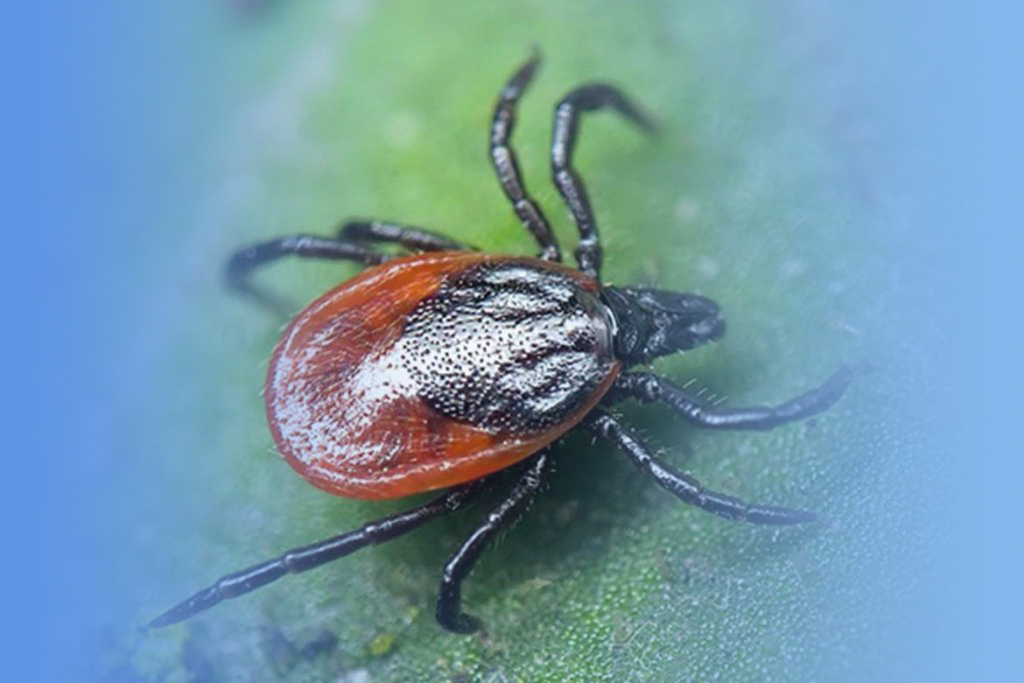[1] Yu ZJ, Wang H, Wang TH, et al. Tick-borne pathogens and the vector potential of ticks in China[J]. Parasit Vectors, 2015, 8:24. DOI:10.1186/s13071-014-0628-x.
[2] Cupp EW. Biology of ticks[J]. Vet Clin North Am Small Anim Pract, 1991, 21(1):1-26. DOI:10.1016/s0195-5616(91)50001-2.
[3] Selmi M, Tomassone L, Ceballos LA, et al. Analysis of the environmental and host-related factors affecting the distribution of the tick Dermacentor marginatus[J]. Exp Appl Acarol, 2018, 75(2):209-225. DOI:10.1007/s10493-018-0257-8.
[4] Zhang YL, Li BY, Liu LS, et al. Redetermine the region and boundaries of Tibetan Plateau[J]. Geogr Res, 2021, 40(6):1543-1553. DOI:10.11821/dlyj020210138.(in Chinese) 张镱锂, 李炳元, 刘林山, 等. 再论青藏高原范围[J]. 地理研究, 2021, 40(6):1543-1553. DOI:10.11821/dlyj020210138.
[5] Yu X. The geographical distribution and differential diagnosis of Dermacentor nivceus and D. everesitianus[J]. Endem Dis Bull, 1994, 9(4):43-44. DOI:10.13215/j.cnki.jbyfkztb.1994.04.019.(in Chinese) 于心. 银盾革蜱与西藏革蜱的地理分布及其鉴别要点[J]. 地方病通报, 1994, 9(4):43-44. DOI:10.13215/j.cnki.jbyfkztb.1994.04.019.
[6] Ma DX, Zhang GL, Wang TX, et al. Vector competence of Dermacentor everestianus in rabbit fever foci in Ali area[J]. Endem Dis Bull, 1997, 12(1):60-61. DOI:10.13215/j.cnki.jbyfkztb.1997.01.027.(in Chinese) 马德新, 张桂林, 王天祥, 等. 阿里土拉菌病疫源地中西藏革蜱的媒介作用[J]. 地方病通报, 1997, 12(1):60-61. DOI:10.13215/j.cnki.jbyfkztb.1997.01.027.
[7] Rodrigues AFSF, Monteiro CMO, Rosa LS, et al. Pattern of tick spatial distribution of a fragment of forest in an urban area, through a survey by CO2 trap[J]. Arq Inst Biol, 2009, 76(3):461-464. DOI:10.1590/1808-1657v76p4612009.
[8] Li T, Liu M, Zhang TT, et al. The life cycle and development characteristics of Dermacentor everestianus (Acari:Ixodidae) under field conditions in Qinghai-Tibet Plateau[J]. Exp Appl Acarol, 2018, 76(4):513-522. DOI:10.1007/s10493-018-0325-0.
[9] Pollock LJ, Tingley R, Morris WK, et al. Understanding co-occurrence by modelling species simultaneously with a joint species distribution model (JSDM)[J]. Methods Ecol Evol, 2014, 5(5):397-406. DOI:10.1111/2041-210x.12180.
[10] Jiang RP, Zou M, Qin Y, et al. Modeling of the potential geographical distribution of three Fritillaria species under climate change[J]. Front Plant Sci, 2022, 12:749838. DOI:10.3389/fpls.2021.749838.
[11] Li YC, Li MY, Li C, et al. Optimized MaxEnt model predictions of climate change impacts on the suitable distribution of Cunninghamia lanceolata in China[J]. Forests, 2020, 11(3):302. DOI:10.3390/f11030302.
[12] National Basic Geographic Information Center. Administrative boundaries data at 1:1000 000 scale over the Tibetan Plateau (2017)[Z]. A Big Earth Data Platform for Three Poles, 2019. DOI:10.11888/Geogra.tpdc.270001. (in Chinese) 国家基础地理信息中心. 青藏高原1:100万行政边界数据(2017)[Z]. 时空三极环境大数据平台, 2019. DOI:10.11888/Geogra.tpdc.270001.
[13] Wang L, Chen W. A CMIP5 multimodel projection of future temperature, precipitation, and climatological drought in China[J]. Int J Climatol, 2014, 34(6):2059-2078. DOI:10.1002/joc.3822.
[14] Zhou BT, Wen QH, Xu Y, et al. Projected changes in temperature and precipitation extremes in China by the CMIP5 multimodel ensembles[J]. J Climate, 2014, 27(17):6591-6611. DOI:10.1175/jcli-d-13-00761.1.
[15] Knutson TR, Sirutis JJ, Zhao M, et al. Global projections of intense tropical cyclone activity for the late twenty-first century from dynamical downscaling of CMIP5/RCP4.5 scenarios[J]. J Climate, 2015, 28(18):7203-7224. DOI:10.1175/jcli-d-15-0129.1.
[16] Pinzon JE, Tucker CJ. A non-stationary 1981–2012 AVHRR NDVI3 g time series[J]. Remote Sens, 2014, 6(8):6929-6960. DOI:10.3390/rs6086929.
[17] Mu HW, Li XC, Wen YN, et al. A global record of annual terrestrial human footprint dataset from 2000 to 2018[J]. Sci Data, 2022, 9(1):176. DOI:10.1038/s41597-022-01284-8.
[18] Ahmadi M, Hemami MR, Kaboli M, et al. MaxEnt brings comparable results when the input data are being completed;Model parameterization of four species distribution models[J]. Ecol Evol, 2023, 13(2):e9827. DOI:10.1002/ece3.9827.
[19] Warren DL, Seifert SN. Ecological niche modeling in Maxent:The importance of model complexity and the performance of model selection criteria[J]. Ecol Appl, 2011, 21(2):335-342. DOI:10.1890/10-1171.1.
[20] Phillips SJ, Anderson RP, Schapire RE. Maximum entropy modeling of species geographic distributions[J]. Ecol Model, 2006, 190(3/4):231-259. DOI:10.1016/j.ecolmodel.2005.03.026.
[21] Sun Z, Huang YR, Gao X, et al. Study on potential distribution characteristics of Haemaphysalis longhornis in China using a MaxEnt Model[J]. Prog Vet Med, 2022, 43(10):60-66. DOI:10.16437/j.cnki.1007-5038.2022.10.020.(in Chinese) 孙卓, 黄禹然, 高翔, 等. 基于最大熵模型对长角血蜱在中国潜在分布特征的研究[J]. 动物医学进展, 2022, 43(10):60-66. DOI:10.16437/j.cnki.1007-5038.2022.10.020.
[22] Wang ZC, Wang Y, Kang YK, et al. Potential distribution area analysis of Himalayan marmot on the Tibetan Plateau under the influence of climate change[J]. Grassl Turf:1-16. (2024-03-20)[2024-09-02]. http://kns.cnki.net/kcms/detail/62.1156.S.20240319.1726.002.html.(in Chinese) 王志成, 王艳, 康宇坤, 等. 气候变化影响下青藏高原喜马拉雅旱獭潜在分布区分析[J/OL]. 草原与草坪:1-16. (2024-03-20)[2024-09-02]. http://kns.cnki.net/kcms/detail/62.1156.S.20240319.1726.002.html.
[23] Shi XD, Wang JW, Zhang L, et al. Prediction of the potentially suitable areas of Litsea cubeba in China based on future climate change using the optimized MaxEnt model[J]. Ecol Ind, 2023, 148:110093. DOI:10.1016/j.ecolind.2023.110093.
[24] Zhang JJ, Jiang F, Li GY, et al. MaxEnt modeling for predicting the spatial distribution of three raptors in the Sanjiangyuan National Park, China[J]. Ecol Evol, 2019, 9(11):6643-6654. DOI:10.1002/ece3.5243.
[25] Duman Z, Mao XQ, Cai BF, et al. Exploring the spatiotemporal pattern evolution of carbon emissions and air pollution in Chinese cities[J]. J Environ Manage, 2023, 345:118870. DOI:10.1016/j.jenvman.2023.118870.
[26] Li SC, Tang HY, Ma YC, et al. Analyses on monthly mean temperature and anomalous distribution over Qinghai-Xizang plateau in winter and summer[J]. Plateau Meteor, 2000, 19(4):520-529. DOI:10.3321/j.issn:1000-0534.2000.04.014.(in Chinese) 李生辰, 唐红玉, 马元仓, 等. 青藏高原冬、夏季月平均气温及异常分布研究[J]. 高原气象, 2000, 19(4):520-529. DOI:10.3321/j.issn:1000-0534.2000.04.014.
[27] Wang JS, Yao YB, Wang Y, et al. Meteorological droughts in the Qinghai-Tibet Plateau:Research progress and prospects[J]. Adv Earth Sci, 2022, 37(5):441-461. DOI:10.11867/j.issn.1001-8166.2022.022.(in Chinese) 王劲松, 姚玉璧, 王莺, 等. 青藏高原地区气象干旱研究进展与展望[J]. 地球科学进展, 2022, 37(5):441-461. DOI:10.11867/j.issn.1001-8166.2022.022.
[28] Venter O, Sanderson EW, Magrach A, et al. Global terrestrial human footprint maps for 1993 and 2009[J]. Sci Data, 2016, 3(1):160067. DOI:10.1038/sdata.2016.67.
[29] Liu M, Li T, Yu ZJ, et al. Characterization of the life cycle of the tick Haemaphysalis tibetensis under field conditions in Qinghai-Tibet plateau[J]. Exp Appl Acarol, 2016, 69(1):107-115. DOI:10.1007/s10493-016-0020-y.
[30] Jouda F, Perret JL, Gern L. Ixodes ricinus density, and distribution and prevalence of Borrelia burgdorferi sensu lato infection along an altitudinal gradient[J]. J Med Entomol, 2004, 41(2):162-169. DOI:10.1603/0022-2585-41.2.162.
[31] Shi QJ, Guo YY, Engelhardt SC, et al. Endangered wild yak (Bos grunniens) in the Tibetan Plateau and adjacent regions:Population size, distribution, conservation perspectives and its relation to the domestic subspecies[J]. J Nat Conserv, 2016, 32:35-43. DOI:10.1016/j.jnc.2016.04.001.
[32] Jin S, Wang TH, Li T, et al. Life cycle of Dermacentor everestianus Hirst, 1926 (Acari:Ixodidae) under laboratory conditions[J]. Korean J Parasitol, 2017, 55(2):193-196. DOI:10.3347/kjp.2017.55.2.193.
[33] Li XL. Impacts of climate change on the distribution of mammals on the Qinghai-Tibet Plateau[D]. Lanzhou: Lanzhou University, 2023. DOI:10.27204/d.cnki.glzhu.2023.000794. (in Chinese) 李欣蕊. 气候变化对青藏高原哺乳动物分布影响研究[D]. 兰州:兰州大学, 2023. DOI:10.27204/d.cnki.glzhu.2023.000794.
[34] De Pelsmaeker N, Korslund L, Steifetten Ø. High-elevational occurrence of two tick species, Ixodes ricinus and I. trianguliceps, at their northern distribution range[J]. Parasit Vectors, 2021, 14(1):161. DOI:10.1186/s13071-021-04604-w. |



